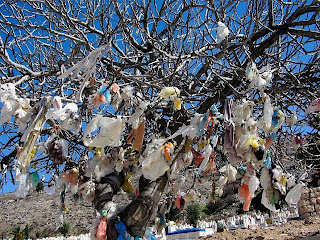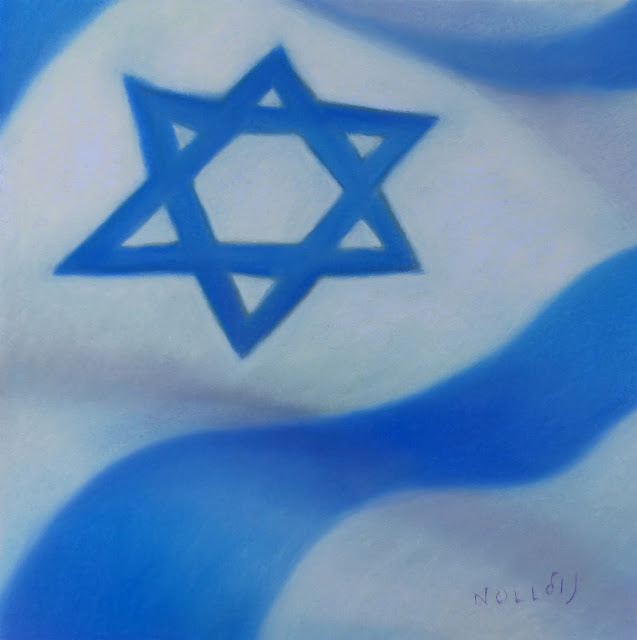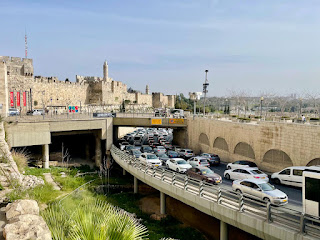Death is Something that We all Fear and Dread

Death is something that we all fear and dread, like it is there but never going to happen, all at the same time. When my father died, I was so overwhelmed with the concept of death that I really didn’t know how to deal with his passing. It was like he was going on a vacation and I would see him when he returned. He hasn’t come back yet… or so I thought.
Recently, Hashem has been introducing me to death again for some reason. It started with a trip to Tzfat and Meron on Rosh Chodesh Kislev (my anniversary) with Adele and included a crazy bunch of Sephardim (Jews of Middle Eastern decent) to visit the kevarim (graves) of some of the greats in Jewish history. The bus ride was full of song and laughter and when we got there, it was raining. Some of the men chose to hike to the Mikveh (ritual bath) in the Tzfat cemetery and others went to recite Tehilim (Prayers) at the kevarim.
It was spooky. All the graves had little solar powered candles that collect light during the day and at night, twinkled in the rainy blackness. We hiked up the hill, past all the old gravesites, past the makeshift rail systems to hoist the dead to their eventual resting places, and past some of the wackiest structures you could imagine. They were right out of a Frankenstein movie with additions having been made over hundreds of years to shield the candles and honor the dead.
The most famous of the rabbis buried in the Tzfat cemetery is Rabbi Isaac Luria, also known as the ARI. The ARI came to Tzfat in 1530 from Egypt. He was one of the most famous Kabbalists of all times, and while in Tzfat, the legend is that he learned new Kabbalistic insights while studying with Elijah the Prophet in a cave in the synagogue located above the cemetery. Next to the ARI his son is buried, Rabbi Moshe Luria. There is a tree that grows out of Rabbi Moshe Luria's grave and a tradition has developed to hang plastic sacks on the tree containing visitor requests, asking for Rabbi Moshe's intercession with the Divine regarding some aspect of their life. While we were there, a woman had her daughter on the other end of the phone who wanted to ask for a whole host of things (she was admonished for asking for a new cell phone, “That is not the kind of thing we ask the Rabbi for!”).
Near the ARI’s kever is the kever of Rabbi Moshe Alsheich, who was best known for leading the movement of reaccepting Jews that had been forcibly converted to Christianity. Also next to these great Rabbis is the kever of the great Kabbalist, Rabbi Shlomo Alkabetz, who is known for composing Lecha Dodi (Come my Beloved), which is sung every Friday night to welcome in the Sabbath. He wrote Lecha Dodi in line with the Kabbalistic belief that, during the week, each one of a Jew's actions creates an angel. On Shabbat, these angels join the person, in order to bring in the Sabbath Queen.
Below the ARI's grave is that of Rabbi Yosef Caro. Rabbi Caro is known for writing the Shulhan Aruch, the Code of Jewish Law. He wrote the Shulhan Aruch to make the laws of the Torah easier for Jews, who because of the expulsion from Spain, were being dispersed throughout the world, complicating the observance of the 613 Mitzvote (Commandments). Tradition has it that Rabbi Caro wrote the Shulhan Aruch with the help of an angel in the place where the Yosef Caro Synagogue now stands.
The Tzfat cemetery is also known as the burial place for Jews who lived thousands of years ago. Some of the oldest kevers that are known are those of Hosea the Prophet, Rabbi Pinchas Ben Yair (father-in-law of Rabbi Shimon Bar Yochai, who is credited with writing down the Kabbalistic Book of the Zohar in the 1st century A.D.) and, some believe that Chana and her Seven Sons (of Chanukah fame) are also buried there.
The next visit that I received to introduce me to death was a funeral that I attended for Pinchas, a little old man that went to my Synagogue. He must have been 80 or 90 years old and we were all expecting that he would pass on at any time. I saw him on Shabbat, about two weeks before he died. He was moving very slowly and I think that day he had his last Alyiah to the Torah. His son died in the Yom Kippur War and we had just attended Kadish for him on the day before Yom Kippur. When Pinchas died, we all found out the same day and left work early to attend his funeral. We stood in front of the Synagogue and when the van arrived with his body, the guy from the Havera Kidusha got out. He was a guy I had seen before, grizzled and old, with a long white beard and clothing that placed him from Eastern Europe about 200 years ago.
The body was placed in front of the Synagogue and we listened to stories about Pinchas’s life, how he was a founder of the Synagogue, and how he was always there early, waiting for everyone else to pray. I remember when, on the way home from morning minyan at the big synagogue in town, I saw him walking with his cane. This was about a year ago and I pulled over to ask if he wanted a ride. He didn’t but, to humor me, he got in anyways. He used to sit in the corner of the little Synagogue that he co-founded, right next to the Rabbi.
On this particular day, he was wrapped in a cloth under a burial shawl—and then they loaded him into the van and took him to the Cemetery. We all convened at the grave-side, said some words, and prayed; then the old Havara Kidusha guy climbed into the hole in the ground and disappeared in order to prepare Pinchas’s body for burial. The family members cut their clothing with a yellow utility knife and then dumped about 15 garbage pails of dirt into the hole. That was it; the life of Pinchas.
Early this week, I was asked by the CEO of my company to write a letter to send to a bereaved friend that lives in the US. His wife had passed on and we needed to send something that expressed our condolences. It got me thinking about how to be with the bereaved. It is really hard to know what to say. I remembered after my dad died and how difficult it was to feel or even know how to feel.
Then the next day at lunch, I found out that someone that I had met, someone that was a work friend of Adele, someone that was a real heroic type, and too young, died in a freak training accident in the army. He lived in Zichron Yaakov across the street from my sister-in-law. The death of Gal Azoulai was a real tragedy for the entire country. This funeral was totally different than the funeral for Pinchas, which was intimate and was expected by the community. For Gal’s funeral, the graveyard was packed. It was one of the saddest things I have experienced. Gal’s fellow soldiers were just barely able to contain the emotion, and some couldn’t. I will be haunted by the image of his mother, as she appeared to be trying to crawl out of her skin while leaving the cemetery.
They fired a 21 gun salute, right over the heads of the yeshiva students that had gathered on the roof next door. Everyone was there, from the big brass to the tourists like me. It was such a public event... unimaginably tragic for the family.
As we all know, death is hard for the living. When a dear friend, Barb from Antarctica, asked me recently, “what do you say to someone that is bereaved?” I didn’t know what to tell her. I thought I would look it up and then...didn’t. In the mean time, one of my greatest teachers, Morah Yehudis wrote something at the passing of the Bostoner Rebbe that stirred my interest again. “Baruch dayan ha’emet,” which means, Blessed is the judge of truth—the idea being that even death makes moral sense—it’s just that we, in our current state of life, are mostly incapable of fathoming that level of truth.
Shabbat Shalom le kulam









